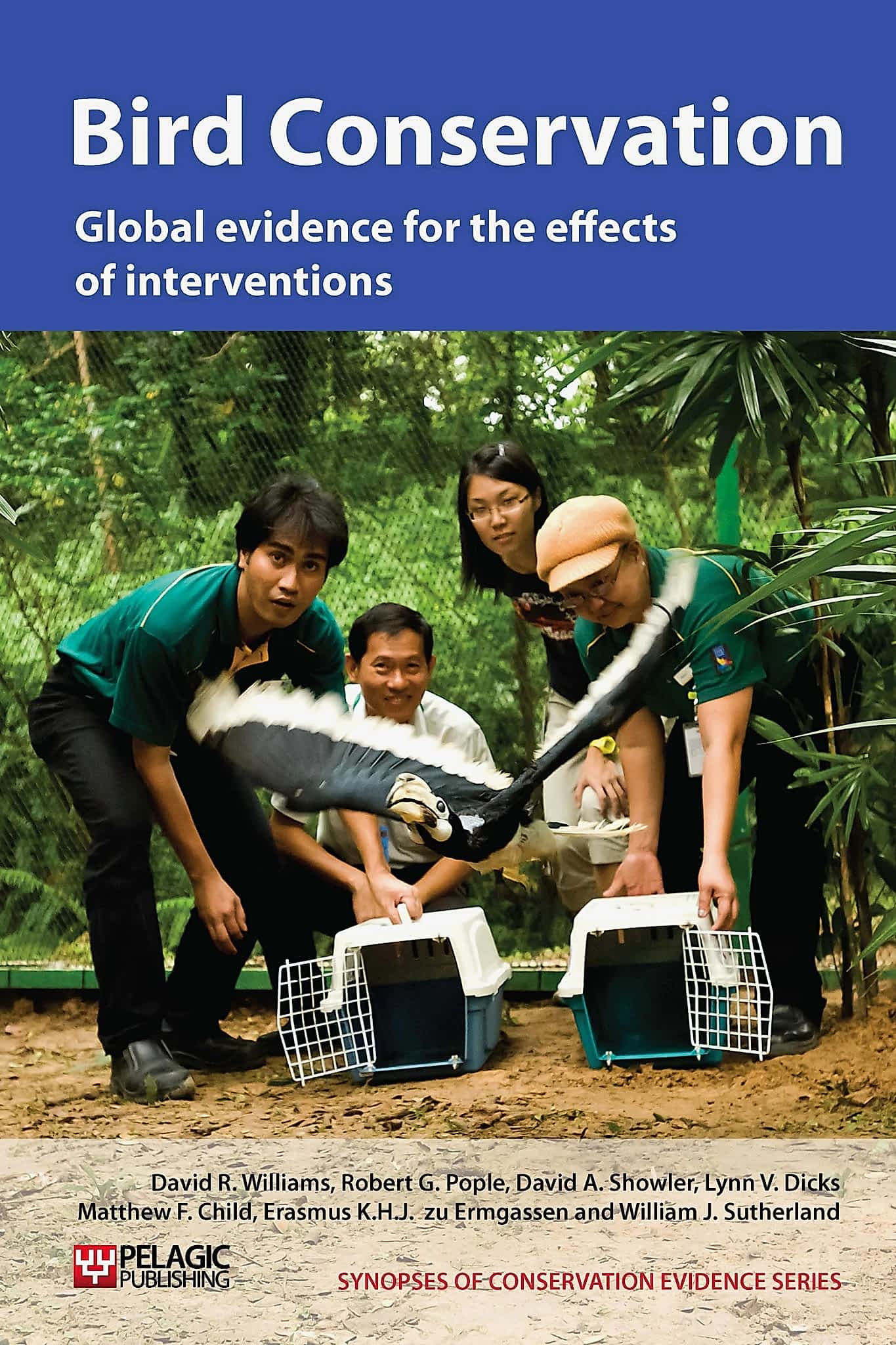Actions to conserve biodiversity
We have summarised evidence from the scientific literature about the effects of actions to conserve wildlife and ecosystems.
Review the evidence from the studies
Not sure what Actions are? Read a brief description.
454 Actions found
Refine
Hide
454 Actions found
Download Actions
Order results by:
| Action | Effectiveness | Studies | Category | |
|---|---|---|---|---|
Physically protect nests with individual exclosures/barriers or provide shelters for chicks of waders Action Link | Likely to be beneficial | 12 | ||
Remove/control adult brood parasites Action Link | Likely to be beneficial | 12 | ||
Leave headlands in fields unsprayed (conservation headlands) Action Link | Likely to be beneficial | 12 | ||
Provide supplementary food for raptors to increase reproductive success Action Link | Likely to be beneficial | 12 | ||
Translocate songbirds Action Link | Likely to be beneficial | 12 | ||
Use decoys to attract birds to safe areas Action Link | Likely to be beneficial | 12 | ||
Exclude grazers from semi-natural habitats Action Link | Trade-off between benefit and harms | 11 | ||
Restore or create inland wetlands Action Link | Beneficial | 11 | ||
Provide artificial nesting sites for parrots Action Link | Unknown effectiveness (limited evidence) | 11 | ||
Remove ectoparasites from nests to increase survival or reproductive success Action Link | Unlikely to be beneficial | 11 | ||
Provide artificial nesting sites for ground and tree-nesting seabirds Action Link | Likely to be beneficial | 11 | ||
Provide artificial nesting sites for woodpeckers Action Link | Unknown effectiveness (limited evidence) | 11 | ||
Foster eggs or chicks of raptors with wild conspecifics Action Link | Likely to be beneficial | 11 | ||
Reduce tillage Action Link | Trade-off between benefit and harms | 10 | ||
Mark power lines to reduce incidental bird mortality Action Link | Beneficial | 10 | ||
Use signs and access restrictions to reduce disturbance at nest sites Action Link | Likely to be beneficial | 10 | ||
Employ grazing in artificial grasslands/pastures Action Link | Trade-off between benefit and harms | 10 | ||
Control avian predators on islands Action Link | Likely to be beneficial | 10 | ||
Control predators not on islands for songbirds Action Link | Awaiting assessment | 10 | ||
Clean nest boxes to increase occupancy or reproductive success Action Link | Likely to be beneficial | 10 | ||
Use vocalisations to attract birds to safe areas Action Link | Likely to be beneficial | 10 | ||
Artificially incubate and hand-rear raptors in captivity Action Link | Likely to be beneficial | 10 | ||
Leave uncropped, cultivated margins or plots, including lapwing and stone curlew plots Action Link | Likely to be beneficial | 9 | ||
Use legislative regulation to protect wild populations Action Link | Beneficial | 9 | ||
Clear or open patches in forests Action Link | Trade-off between benefit and harms | 9 |
Download Actions

Bird Conservation - Published 2013
Bird Synopsis
Watch this search
If you are familiar with RSS feeds, please click the button below to retrieve the feed URL:
RSS feed for this searchIf you are unfamiliar with RSS feeds, we would suggest reading this BBC article.
Unfortunately, due to the number of feeds we have available, we cannot provide e-mail updates. However, you could use tools such as Feed My Inbox to do this for you.
What are 'Individual studies' and 'Actions'?
Individual studies
An individual study is a summary of a specific scientific study, usually taken from a scientific journal, but also from other resources such as reports. It tells you the background context, the action(s) taken and their consequences.
If you want more detail please look at the original reference.
Actions
Each action page focuses on a particular action you could take to benefit wildlife or ecosystems.
It contains brief (150-200 word) descriptions of relevant studies (context, action(s) taken and their consequences) and one or more key messages.
Key messages show the extent and main conclusions of the available evidence. Using links within key messages, you can look at the paragraphs describing each study to get more detail. Each paragraph allows you to assess the quality of the evidence and how relevant it is to your situation.
Where we found no evidence, we have been unable to assess whether or not an intervention is effective or has any harmful impacts.




















